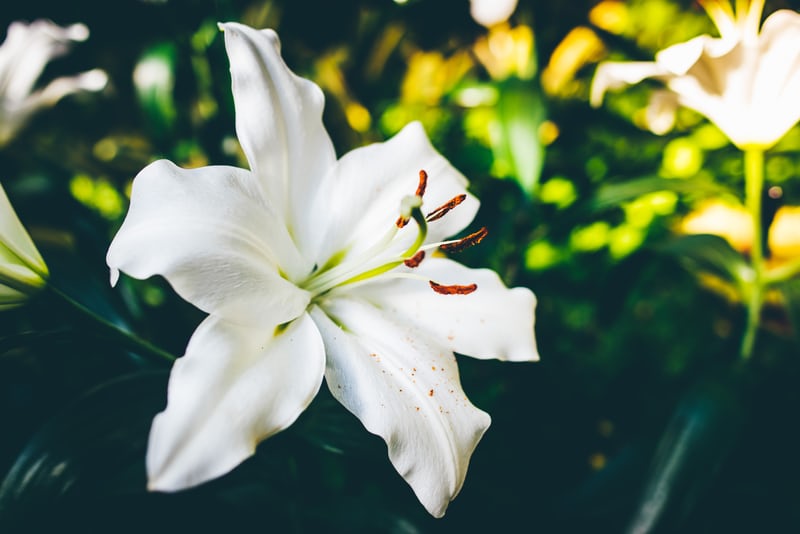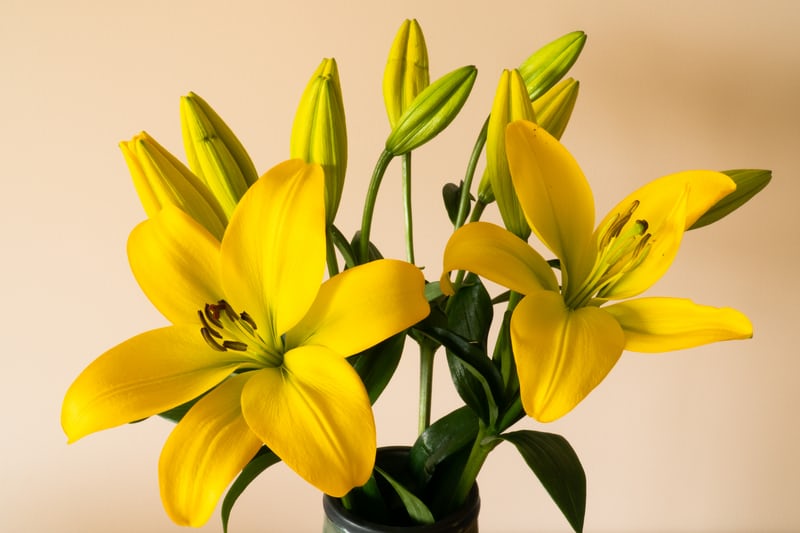The genus Lilium belongs to the family of plants known as Liliaceae. These perennial plants are one of the world’s most easily recognizable flowers. The plant can be easily found in North America, Asia, Europe, and Australia. They flower during the spring and summer and go dormant during the winter. The flower color ranges from orange, pink, purple, red, yellow to white. The cheerful colors attract butterflies. The stems of the flower range from 2-6 ft.

Types Of Lilies
Lilies come in a range of colors, shapes, and patterns. There are over 90 different species of lilies and their endless hybrids are available. Here are some popular lilies that you can’t get enough of.
- Stargazer Lily: Most popular species with a strong smell.
- African Queen Lily: Apricot hued petals, bears high temperature
- Tiger Lily: Orange sepals with dark red spots
- Mona Lisa Lily: a softer version of Stargazer
- Tiny Bee Lily: Gorgeous golden blooms with tiny black spots
- Acapulco Lily: Bright pink flowers
- Casablanca Lily: White as snow with its intense smell, this is a classic choice for bridal bouquets.
How to Grow Lily
The preferred method to grow lilies is from bulbs. To grow lilies from bulbs, dig a hole about 6 inches deep and place the bulb inside. Make sure to set the pointy side up and the flat part at the bottom. Space the bulbs 8-10 inches apart. Fill each hole with soil and gently press it. Water the ground thoroughly.
How to Care for Lily
Light
Lilies love full sun. However, they do well in partial sun as well.


Soil
Most lilies prefer acidic to neutral soil that is well-draining and holds moisture. Apply 2-3 inches of mulch over the soil after planting. Also, apply a thin layer of compost each spring.
Water
Water them frequently during active growth.
Fertilizer
Apply a organic fertilizer every 2 weeks from planting until 6 weeks after flowering.
Pruning
Cut down the dead stalks in the late fall or early spring. Remove the dead flowers as well.
Pests & Diseases
Gray molds can sometimes make problems. Make sure your lilies are not crowded and have plenty of air circulation.
